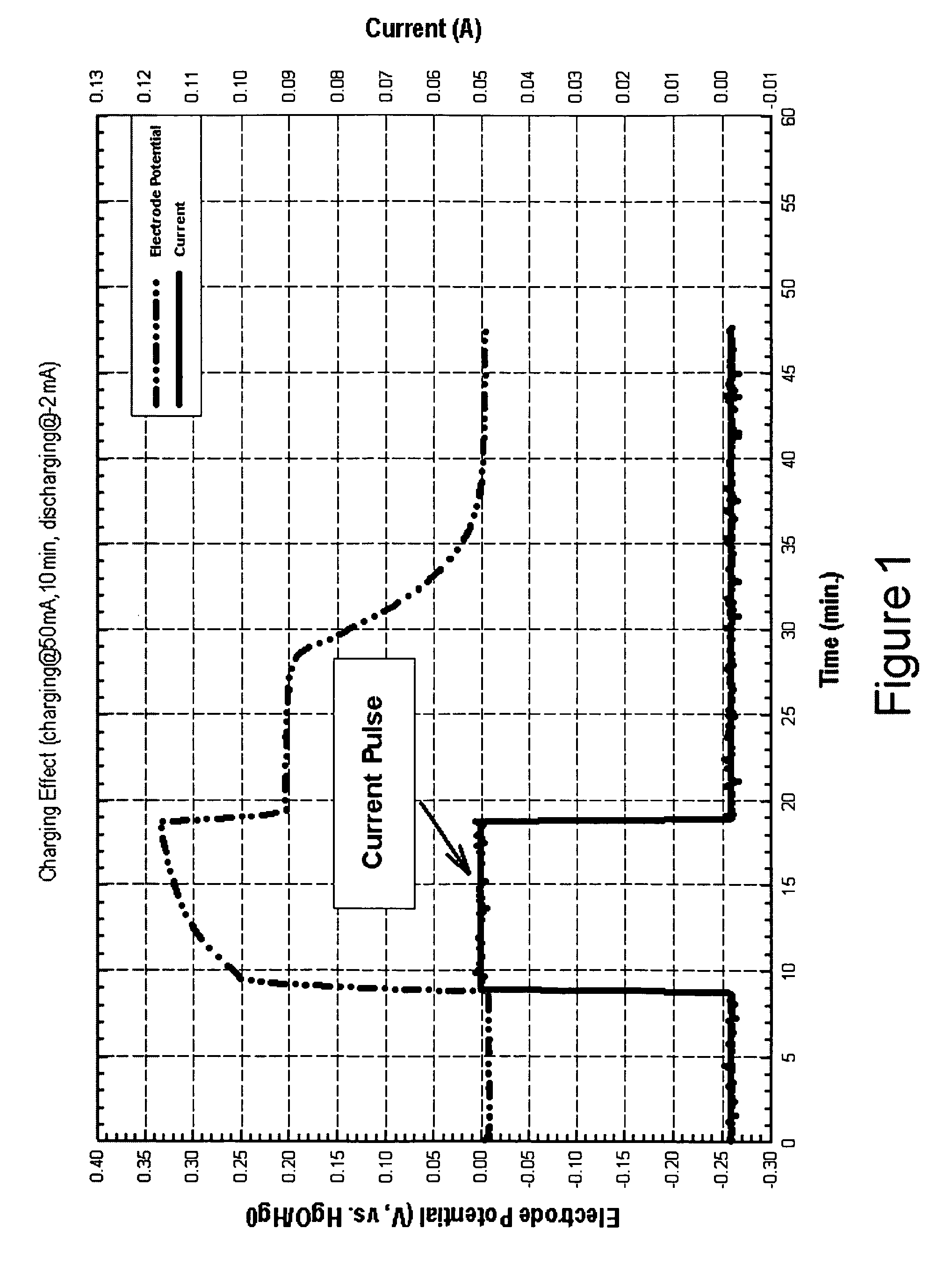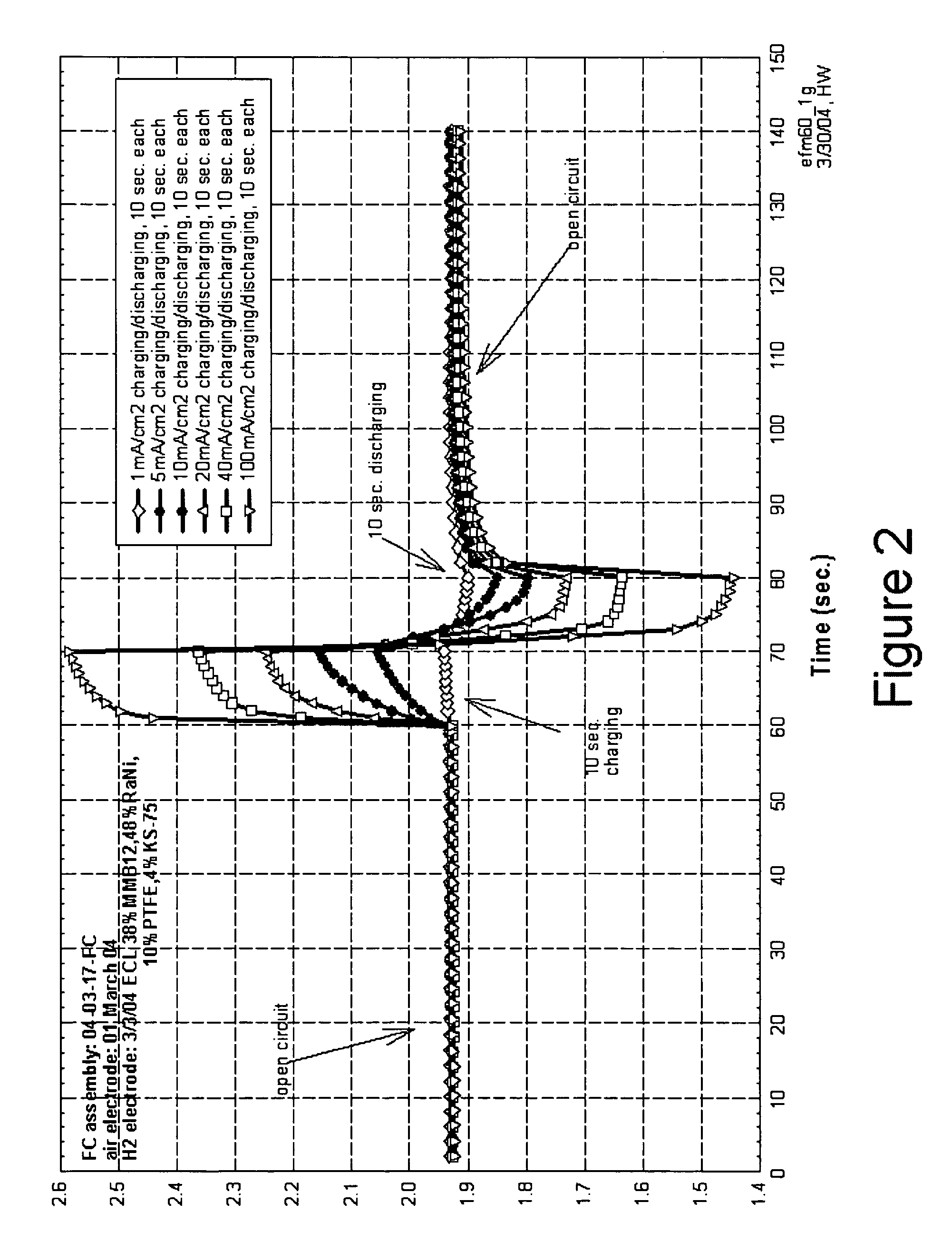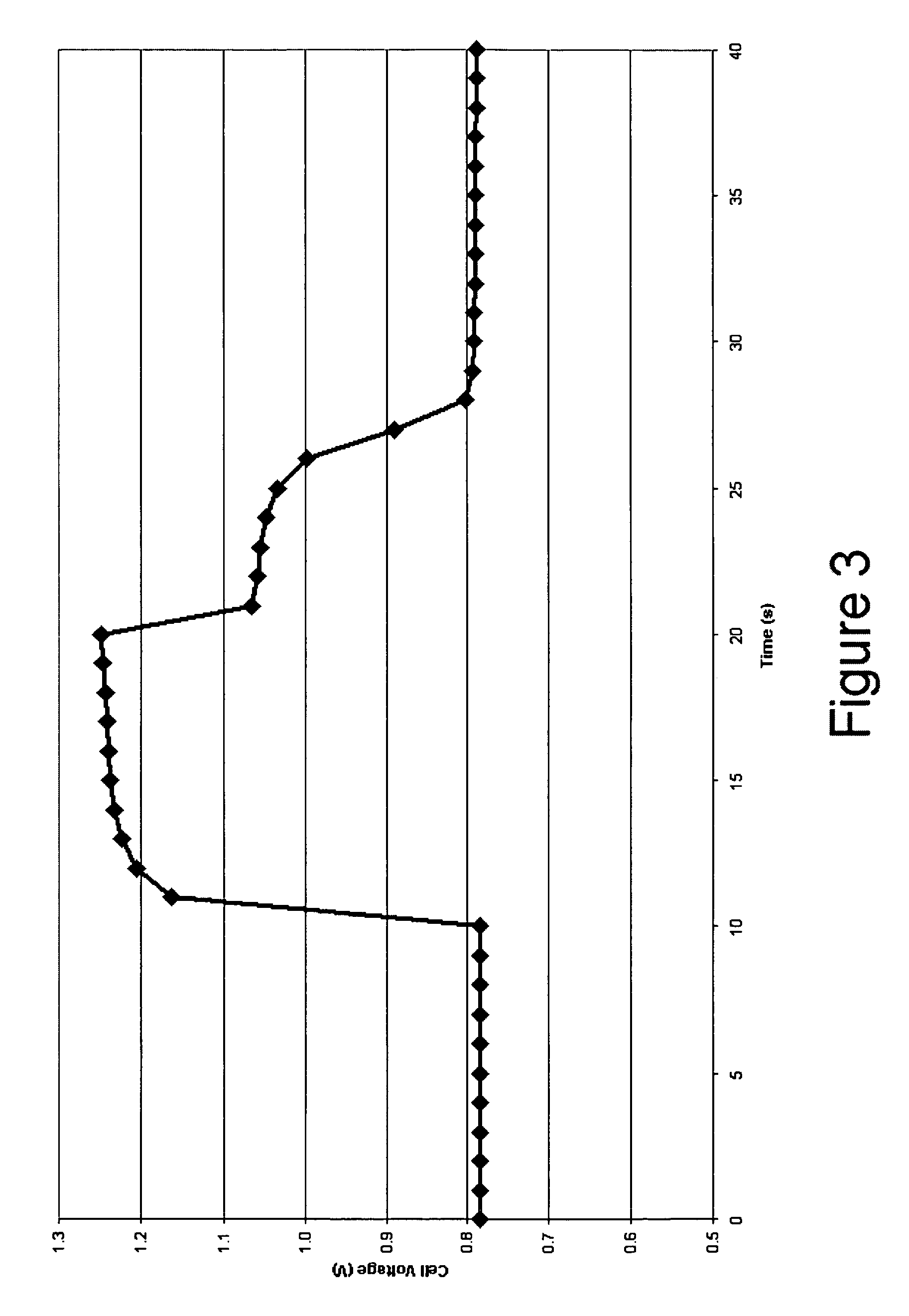Method and apparatus for maintaining high voltage in a fuel cell
- Summary
- Abstract
- Description
- Claims
- Application Information
AI Technical Summary
Benefits of technology
Problems solved by technology
Method used
Image
Examples
Embodiment Construction
[0025] In accordance with the present invention there is provided a method for achieving and sustaining a higher operating potential resulting in increased voltage in a fuel cell having energy storage capability. An alkaline fuel cell having a hydrogen electrode with hydrogen storage capability and an oxygen electrode with oxygen storage capability may have a normal operating cell voltage of approximately 0.75V. As shown in FIG. 3, by applying a 100 mA / cm2 pulse of electrical current to the alkaline fuel cell, the fuel cell operating voltage increases to over 1.2 volts. By applying the techniques of the present invention the cell voltage of the alkaline fuel cell is able to be sustained well above the normal operating cell voltage. Preferably, the alkaline fuel cell sustains an elevated operating voltage above 0.9 volts. More preferably, the alkaline fuel cell sustains an elevated operating voltage above 1.0 volts. Most preferably, the alkaline fuel cell maintains an elevated operat...
PUM
 Login to View More
Login to View More Abstract
Description
Claims
Application Information
 Login to View More
Login to View More - R&D
- Intellectual Property
- Life Sciences
- Materials
- Tech Scout
- Unparalleled Data Quality
- Higher Quality Content
- 60% Fewer Hallucinations
Browse by: Latest US Patents, China's latest patents, Technical Efficacy Thesaurus, Application Domain, Technology Topic, Popular Technical Reports.
© 2025 PatSnap. All rights reserved.Legal|Privacy policy|Modern Slavery Act Transparency Statement|Sitemap|About US| Contact US: help@patsnap.com



